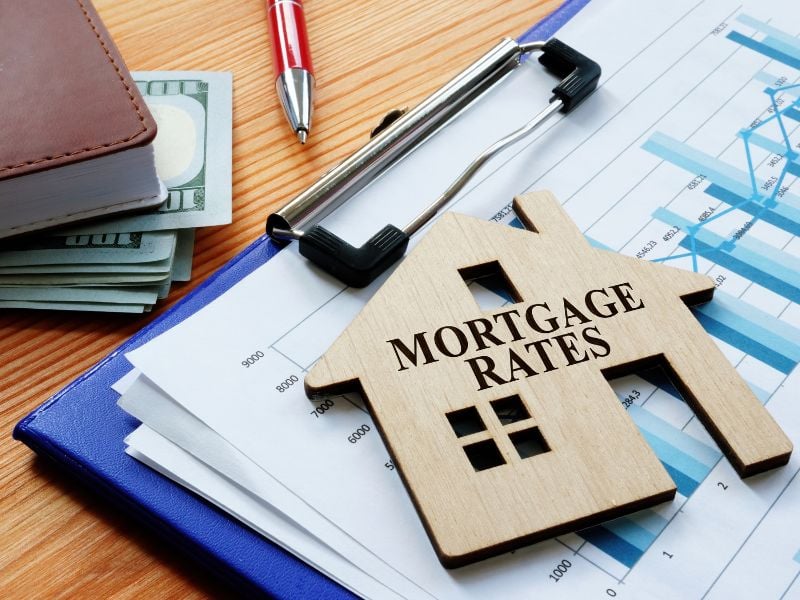
Will Mortgage Interest Rates Go Down?
Expert Predictions for 2025-2026
August 10, 2025
The short and honest answer is no, experts aren't predicting mortgage rates will drop to 4% next year (2026). While there might be some small fluctuations, the general consensus is that rates will likely stay in the mid-6% range. If you've been waiting for mortgage interest rates to return to the ultra-low levels of 2020-2021, it's time to adjust those expectations.
As of late July 2025, here's where mortgage interest rates stand:
30-year fixed mortgage rates: Around 6.79% to 6.85% on average
15-year fixed mortgage rates: Approximately 5.99%
5/1 ARM rates: Around 6.07%
These rates represent a significant increase from the historic lows of 2020-2021, when some borrowers secured mortgages below 3%.
The Federal Reserve held its benchmark interest rate unchanged for the fifth consecutive meeting in July 2025, keeping the federal funds rate at 4.25% to 4.5%. While the Fed doesn't directly set mortgage rates, its policies significantly influence them.
Fed Chair Jerome Powell explained that "we don't set mortgage rates at the Fed, we set an overnight rate and the rates that go into mortgages are longer-term rates like Treasury rates." However, Fed decisions create ripple effects throughout the lending market.
While inflation has come down significantly from its peak in 2022, it's still above the Fed's target of 2%. As long as inflation remains elevated, mortgage rates are likely to stay higher as well. This persistent inflation concern is keeping pressure on mortgage interest rates.
Fed Chair Powell noted that "changes to government policies continue to evolve, and their effects on the economy remain uncertain. Higher tariffs have begun to show through more clearly to prices of some goods, but their overall effects on economic activity and inflation remain to be seen."
Leading financial institutions have provided their outlook for mortgage interest rates:
Fannie Mae forecasts mortgage rates to end 2025 near 6.5%
The Mortgage Bankers Association predicts rates hovering around 6.7% through September 2025, stabilizing near 6.3% through 2026
Housing industry analysts with the Mortgage Bankers Association, Redfin, Realtor.com, and Zillow expect mortgage rates to remain in the 6% to 7% range through the end of this year
Mortgage rates probably won't drop significantly in 2025 — especially over the next several weeks while economists keep an eye on inflation, tariffs, and the Federal Reserve. The consensus among experts suggests that:
Mid-6% range is the new normal: Rates are likely to stabilize between 6.3% and 6.7%
Limited volatility expected: Economic forecasts anticipate mortgage rates to remain in the mid-6% range for the remainder of 2025 and into 2026
No return to pandemic lows: We may never see the 2% to 3% mortgage interest rates during the early years of the COVID-19 pandemic again
It's worth noting that sub-3% rates are not typical. For many decades, interest rates ranged from 6%-18.36% from 1971 to 2024. In the 1980s it was common to pay over 10% for a mortgage.
Current mortgage interest rates, while elevated compared to recent years, remain within historical norms. The pandemic-era rates were historically unprecedented, not the standard.
While a rate cut could be just around the corner, it's hard to predict with any certainty when that will actually happen, and plenty of financial experts have missed the mark with rate predictions throughout 2025. The Fed has maintained a cautious approach, prioritizing inflation control over rate cuts.
Several factors influence mortgage interest rates beyond Federal Reserve policy:
10-Year Treasury yields: 10-year Treasury yield has more influence over mortgage rates than the Fed's benchmark rate
Economic uncertainty: Geopolitical events and policy changes create volatility
Housing market dynamics: Supply and demand imbalances affect lending conditions
Any attempt to time the interest rate market could mean waiting far longer than you hoped to buy a home, according to real estate experts. Many people expected rates to fall this year, but that hasn't been the case. This is a good example of why home buyers should buy a house when the timing works for them, rather than following interest rate trends.
Instead of waiting for mortgage interest rates to drop, consider:
Your current financial readiness
Housing market conditions in your area
Your long-term homeownership goals
Available loan programs and incentives
Get pre-approved early to understand your purchasing power
Consider adjustable-rate mortgages for potentially lower initial rates
Explore rate buydown options to reduce your effective rate
Shop multiple lenders for the best available terms
Evaluate refinancing carefully - rates may not justify the costs
Consider home equity products for major expenses
Focus on paying down principal to build equity faster
Economic forecasts anticipate mortgage rates to remain in the mid-6% range for the remainder of 2025 and into 2026. While we may see some fluctuation, significant drops in mortgage interest rates are unlikely in the near term.
Rather than waiting for rates to fall, focus on your personal financial situation and housing needs. Understanding how Federal Reserve policy affects interest rates can help you make informed financial decisions. While mortgage rates remain elevated compared to pandemic-era lows, they're still shifting in response to broader economic conditions.
The key is to stay informed about mortgage interest rate trends while making decisions based on your individual circumstances rather than trying to time the market perfectly. Today's rates, while higher than recent years, remain reasonable by historical standards and shouldn't prevent qualified buyers from pursuing homeownership when they're financially ready.
For the most current mortgage interest rates and personalized advice, consult with qualified mortgage professionals who can assess your specific situation and provide tailored guidance based on the latest market conditions.